This is a post out of the 31 Days of Morning Circles. You can find the main page for this series here.
No matter the activity you are working on, if the child is trying to maintain balance in sitting, the goals of the activity cannot be attained. Rather than tiring the child out as they try to support themselves, ensure they are correctly positioned in the morning circle.
Proper positioning also allows for:
- Eye contact to be maintained if the child can/is willing to
- Interaction with others in the group
- A longer gathering time since the child is comfortable
How to gather in the morning circle
Besides the location, consider how you will gather in the morning circle with a neurodivergent or disabled child.
Here are some possibilities:
- Seated on the floor—free of equipment, if the child can
- Sitting on the floor facing others in the group, or face-to-face with the adult (ideal for joint attention)
- Sitting on the floor with the child between the adult’s legs, both facing outward towards others or toward the activity
- Seated on the floor with pillows supporting
- Sitting on the floor in an adapted seat low to the floor
- Standing—free of equipment, if the child can
- Standing facing others in the group, or face-to-face with the parent, if the child can
- Standing, both adult and child facing others or activity
- Standing in adaptive equipment
- Laying down on their back
- Laying down on their belly
- Laying down on their side
Equipment for proper positioning of neurodivergent and disabled children in the morning circle:
Adapted seating:
- Feeding chair or high chair
- Low chair such as a car seat, adapted floor chair, or corner chair
- Portable adapted chair inserts
- Tilted seating
- Wheelchair
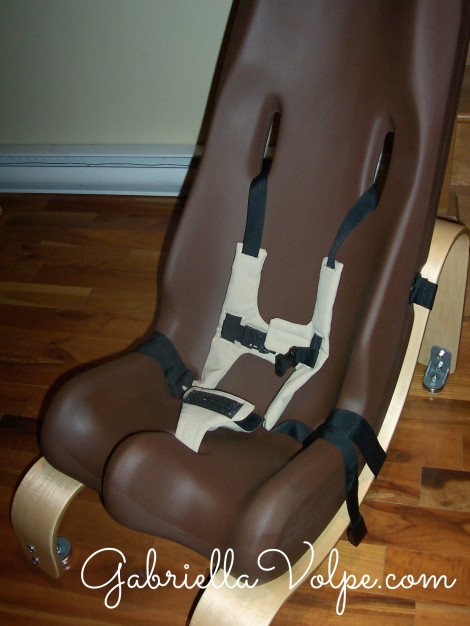
Low-to-ground adapted seat. Great when interacting with others seated on the floor or propped up on their knees.
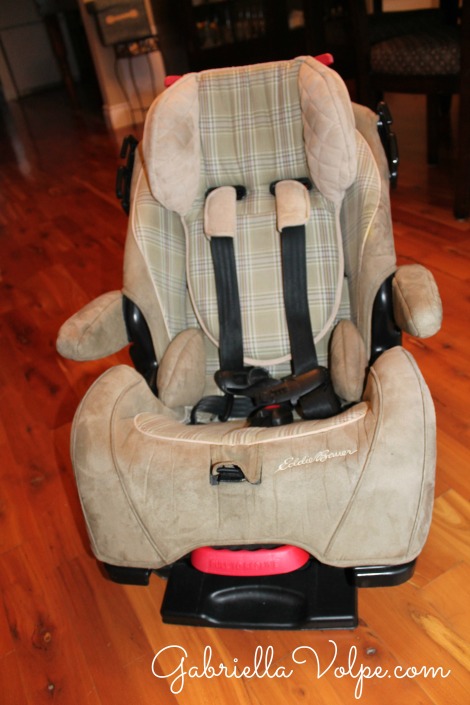
You don’t need to order special seating for adapted floor sitting. After we purchased a new car seat, we had this spare. Rather than get rid of it, we used it as additional seating indoors. The armrests and 5-point harness allowed for extra comfortable support.
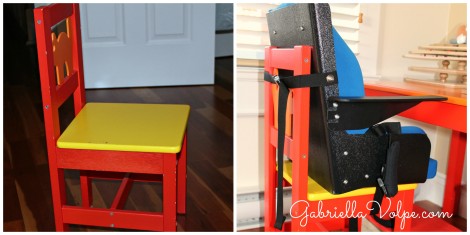
Adapted insert for a “kindergarten chair.” We got this insert custom-made at our rehabilitation center. The chair and table set is from Ikea. Allows a young disabled child to sit with peers or an adult sitting on this chair in the circle.
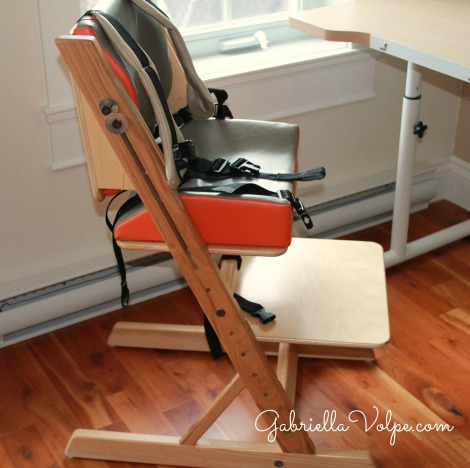
The adapted high chair works when adults and other children are gathered on regular-sized chairs or around a table.
Adapted standing equipment:
- Basic stander
- Walker, with brakes in place
- Sit-to-stand stander
- Reclined stander

When working on standing activities in the circle, using a stander for children who need additional support is ideal.
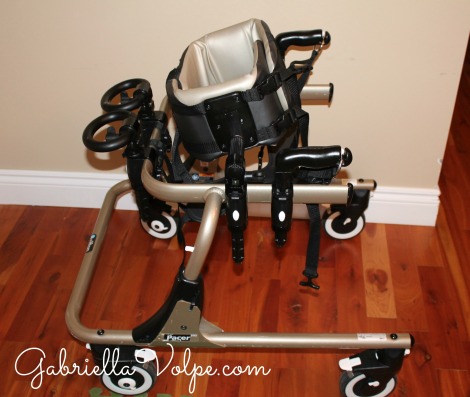
A walker with brakes also allows for standing-in-place activities in the circle while allowing the option to move along with others (i.e., group games like Ring-Around-the-Rosie).
DIY adaptations to provide additional support in sitting or standing:
- Throw pillows
- Inflatable pillows
- Gel-filled pillows
- Carpet squares
- Non-slip placemats
- Exercise ball
- Outdoor furniture pillows
- Mat
- Rolled-up blankets or towels
- Against a wall
- On a couch
- Between the adult’s legs—if balance is required
- On an adult’s lap—for a smaller child
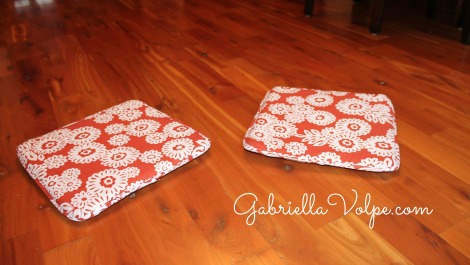
If the child can sit without support, these are outdoor patio pillows that you can use for seated circle activities on the floor. They mark the spot where they need to sit.
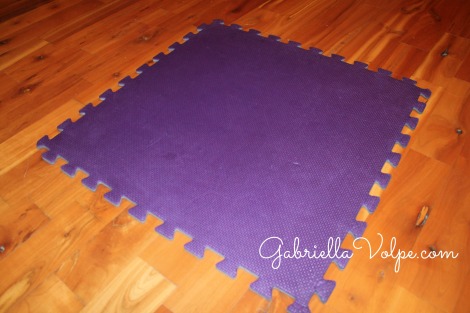
These foam mats are great when used individually as they can also mark the spot for seated circle activities.
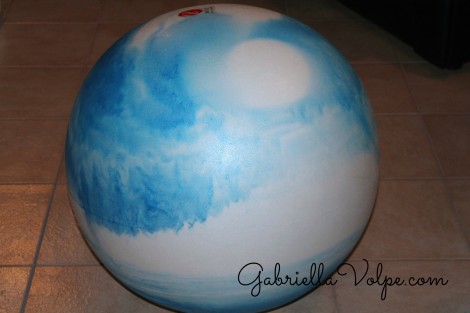
For wigglers and movers, bouncing on this ball while in the circle is a great way to engage the child. It would be ideal to have a ball for each participant in the circle so that everyone is at the same height.
As much as possible, select a method that allows you to have the maximum amount of interaction with the child.
Which position works best for the child? Is there an option I didn’t list here?
Related Article:

Great post once again!
For lying down during circle time, yoga mats would be an addition to the list.
I had to think it out for a while, the list was pretty much complete.
Looking forward to read your next blogs 🙂
Yes! That’s a great idea, Chantal. I added “mat” to the list of sitting materials, but neglected to include a list for laying down. Yoga mats, padded exercise mats, comforters, and large towels are great. I know that Ikea has a pretty nifty mat in their latest catalog (2015) and I’ve had my eye on that since it came out. Thanks for reminding me about the best positioning of all (especially for the adult): laying down … ahhh…